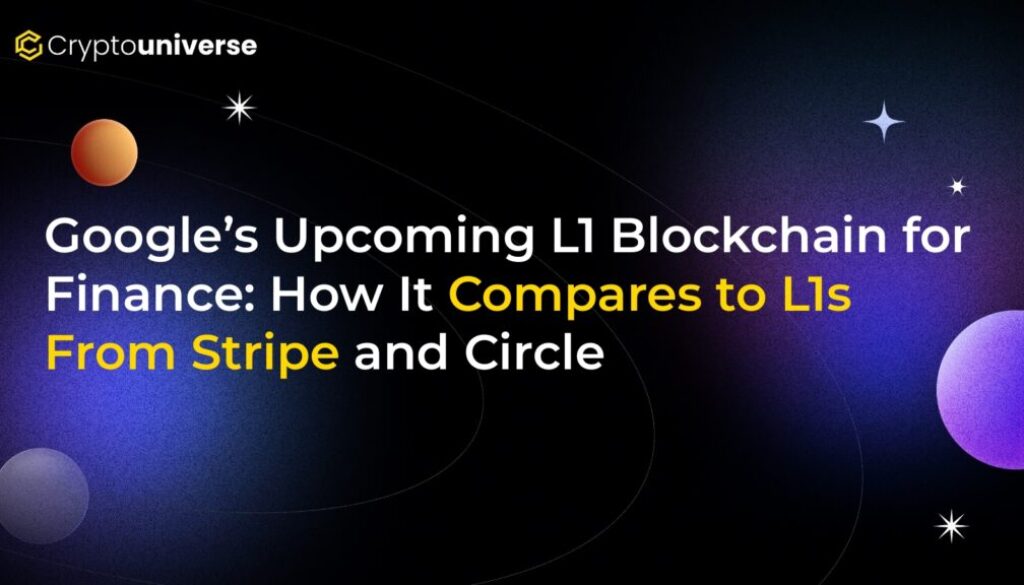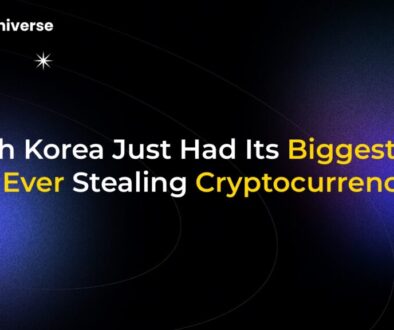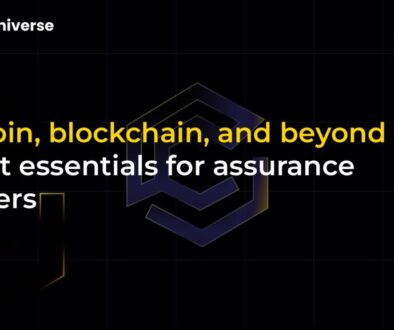Google’s Upcoming L1 Blockchain for Finance: How It Compares to L1s From Stripe and Circle

Big Tech’s Blockchain Battle: Google Enters the Ring
The race to build the foundational layers of the next-generation financial system is heating up, and the contestants are some of the biggest names in technology. Google Cloud has officially thrown its hat in the ring, revealing new details about its own Layer-1 (L1) blockchain, the Google Cloud Universal Ledger (GCUL). This move places Google in direct competition with other fintech giants like Stripe and Circle, each vying to define the future of digital payments and asset settlement.
But Google isn’t just building another blockchain; it’s proposing a fundamentally different approach. While its competitors are creating walled gardens to strengthen their existing ecosystems, Google is positioning GCUL as a credibly neutral, open infrastructure for all. Let’s dive into what GCUL is and how it stacks up against its rivals.
What is the Google Cloud Universal Ledger (GCUL)?
First announced in partnership with CME Group, GCUL is a purpose-built, permissioned L1 blockchain designed specifically for institutional finance. This isn’t a chain for retail users or DeFi degens; it’s engineered for banks, financial institutions, and global enterprises that demand performance, security, and scalability.
According to Rich Widmann, Google’s head of Web3 strategy, GCUL is built on a few core principles:
- Credible Neutrality: GCUL is designed as a shared public utility. The goal is to create a platform where even direct competitors can build and transact without fear of enriching a rival. As Widmann notes, a payment firm like Adyen might hesitate to use Stripe’s blockchain, but they could comfortably build on Google’s neutral ground.
- Institutional-Grade Performance: Leveraging Google’s planet-scale infrastructure, GCUL aims to support billions of users and hundreds of institutions, enabling use cases like 24/7 capital markets, wholesale payments, and large-scale asset tokenization.
- Developer Accessibility: In a significant departure from the EVM-dominated landscape, GCUL will feature Python-based smart contracts. This strategic choice dramatically lowers the barrier to entry for the vast global pool of Python developers and financial engineers, who won’t need to learn niche languages like Solidity.
Head-to-Head: GCUL vs. Stripe’s Tempo vs. Circle’s Arc
To understand Google’s strategy, it’s essential to compare it with the L1s being developed by Stripe and Circle. Each company is leveraging its unique strengths to build a blockchain that serves its core business.
Stripe’s Tempo: The Vertically Integrated Payments Network
Stripe’s project, Tempo, is a natural extension of its massive payments empire. It’s designed to bring its existing merchant rails onto a blockchain, creating a vertically controlled chain optimized for its own ecosystem. The primary strength here is distribution—Stripe can tap into over a trillion dollars in annual payment flows from its merchants.
Circle’s Arc: The Stablecoin-Powered Settlement Layer
Circle, the issuer of the USDC stablecoin, is placing its flagship product at the heart of its L1, Arc. On this network, USDC is the native asset used for gas and settlement. Arc is engineered for lightning-fast transactions and seamless foreign exchange, leveraging USDC’s global footprint and deep liquidity across the crypto ecosystem.
Google’s GCUL: The Neutral Infrastructure Layer
Google’s approach is entirely different. It’s not tying GCUL to an existing payments network or a specific stablecoin. Instead, it’s building the foundational infrastructure—the digital roads and bridges—that any financial institution can use. Its distribution model relies on the immense reach of Google Cloud and its ability to onboard major institutional partners like the CME Group, which is already testing GCUL for collateral, settlement, and fee payments.
At a Glance: The New Corporate L1s
| Feature | Google (GCUL) | Stripe (Tempo) | Circle (Arc) |
|---|---|---|---|
| Core Strategy | Credibly neutral, shared infrastructure | Vertically integrated merchant payments | USDC-centric settlement and FX |
| Target Audience | All financial institutions, banks, enterprises | Stripe merchants and ecosystem partners | USDC users, exchanges, fintechs |
| Key Feature | Python smart contracts, institutional tokenization | Seamless merchant integration | Fast settlement, native currency exchange |
| Timeline | Full launch expected in 2026 | Targeting launch next year | Already in pilot phase |
Why This Matters for the Future of Finance
The entry of Google, Stripe, and Circle into the L1 space signals a major shift. The theoretical promise of blockchain is now being pursued by companies with the resources, distribution, and institutional trust to drive mainstream adoption. This competition is accelerating innovation in areas critical for modernizing finance, including:
- Asset Tokenization: Creating digital representations of real-world assets on a blockchain.
- 24/7 Markets: Moving away from traditional market hours to enable around-the-clock trading and settlement.
- Programmable Money: Building smart contracts that can automate complex financial agreements and workflows.
While the crypto community debates whether these giants should be building on existing networks like Ethereum as Layer-2s, their decision to build their own L1s shows a clear intent: they want to own and control the core infrastructure. Google’s
The Road Ahead
While technical details on GCUL remain scarce, Google has promised more information in the coming months. Testing with market participants is set to begin later this year, with a full launch planned for 2026. As these new digital financial rails are built, the lines between Big Tech, finance, and crypto will continue to blur, paving the way for a more efficient and interconnected global economy.


